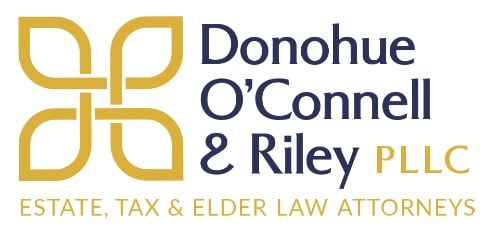Estate Planning, Retirement Planning
The Connection Between Estate Planning and Retirement Planning

Planning for retirement and planning for your estate go hand in hand. Both are about securing your financial future and ensuring your loved ones are provided for after you’re gone. A well-structured retirement plan should align seamlessly with your estate plan so that your wealth is protected, your wishes are honored, and your legacy is passed down efficiently. By taking a proactive approach, you can maximize your retirement savings while safeguarding your assets for future generations.
Aligning Estate Planning with Retirement Goals
A strong estate plan should support your retirement goals rather than create unnecessary complications. As you build wealth for retirement, it’s important to think about how those assets will be managed, accessed, and distributed both during your lifetime and after.
To ensure alignment between your estate plan and retirement plan, consider the following:
- Identifying Long-Term Financial Needs: Will your retirement savings last throughout your lifetime? Estate planning should account for potential long-term care expenses, medical costs, and unexpected financial challenges.
- Creating a Sustainable Withdrawal Strategy: How you draw from your retirement accounts should factor in taxes, required minimum distributions (RMDs), and estate planning objectives.
- Updating Key Documents: Your will, trusts, and power of attorney should reflect your financial priorities and adapt to changes in tax laws and personal circumstances.
- Planning for Incapacity: A power of attorney and healthcare directives help ensure that if you become unable to manage your affairs, a trusted person can step in and make decisions in line with your goals.
By coordinating estate planning with retirement planning, you can create a strategy that protects your financial stability now and ensures an efficient transition of assets later.
Protecting Retirement Accounts with Proper Beneficiary Designations
One of the most overlooked but critical components of estate planning is ensuring that your retirement accounts—such as IRAs, 401(k)s, and pensions—are properly designated to beneficiaries. Unlike other assets, these accounts do not pass through a will or trust but instead are transferred directly to the named beneficiaries.
To protect your retirement savings and prevent potential conflicts, consider the following:
- Regularly Review Your Beneficiaries: Life changes, such as marriage, divorce, or the birth of a child, may necessitate updating your beneficiary designations to reflect your current wishes.
- Name Both Primary and Contingent Beneficiaries: Having a backup ensures that your assets pass to your intended heirs in the event your primary beneficiary is unable to inherit.
- Avoid Naming Your Estate as a Beneficiary: Doing so could trigger probate and create unnecessary tax burdens for your heirs.
- Be Mindful of Spousal Rights: In some states, spouses are automatically entitled to a portion of retirement assets, so it’s important to ensure your designations comply with applicable laws.
Failing to update or properly structure beneficiary designations can result in unintended consequences, such as assets going to an ex-spouse or being subjected to excessive taxation. Ensuring these accounts are properly aligned with your estate plan is essential for preserving wealth for future generations.
Using Trusts to Safeguard Retirement Assets for Heirs
Trusts can play a crucial role in protecting retirement assets and ensuring they are used wisely by your heirs. By placing assets from an IRA or other retirement account into a trust, you can control how and when distributions are made, which can be particularly helpful for beneficiaries who may not be financially responsible or who have special needs.
Some key benefits of using trusts in retirement and estate planning include:
- Asset Protection: A properly structured trust can shield assets from creditors, lawsuits, and potential divorce settlements.
- Controlled Distributions: Instead of beneficiaries receiving a lump sum, a trust allows for structured payouts to ensure long-term financial security.
- Minimized Estate Taxes: Certain types of trusts can help reduce estate taxes and maximize the value of what is passed down to heirs.
- Protection for Minor or Special Needs Beneficiaries: A trust can ensure that funds are managed appropriately for young children or individuals with disabilities without jeopardizing their eligibility for government benefits.
Trusts offer a level of control and security that direct beneficiary designations may not, making them an effective tool in estate and retirement planning.
Minimizing Tax Burdens on Inherited Retirement Funds
Retirement assets often come with tax implications when passed down to beneficiaries. Proper planning can help reduce the tax burden on your heirs and maximize the wealth they inherit. The SECURE Act of 2019 significantly changed how inherited retirement accounts are taxed, eliminating the "stretch IRA" option for most non-spouse beneficiaries. Now, many heirs must withdraw the full balance of an inherited IRA within 10 years, which can lead to higher taxes.
To minimize tax liabilities:
- Use Roth Conversions Strategically: Converting a traditional IRA to a Roth IRA can reduce the tax burden on your heirs, as Roth distributions are tax-free.
- Consider Charitable Giving: Leaving retirement assets to a charitable remainder trust (CRT) can provide income to your heirs for a set period while donating the remainder to charity, potentially reducing taxes.
- Plan for Distributions Carefully: Work with financial and legal professionals to develop a strategy that minimizes tax consequences and maximizes the longevity of retirement assets for your heirs.
Estate planning should always take into account the tax impact on your beneficiaries to ensure they receive the most value from the assets you leave behind.
Ensuring Financial Stability in Later Years
A key goal of estate and retirement planning is ensuring that you have financial stability throughout your lifetime. With rising healthcare costs, longer life expectancies, and economic uncertainties, careful planning is necessary to avoid outliving your savings.
Steps to maintain financial security in retirement include:
- Budgeting for Long-Term Care Costs: Consider options such as long-term care insurance, Medicaid planning, or setting aside dedicated assets to cover healthcare needs.
- Maintaining a Sustainable Withdrawal Strategy: Work with financial professionals to determine how much you can safely withdraw each year from your retirement accounts without depleting your savings.
- Updating Your Estate Plan Regularly: Your financial situation may change over time, so reviewing your plan periodically ensures it continues to align with your goals and needs.
- Protecting Against Financial Exploitation: As we age, financial scams become a greater risk. Naming a trusted financial power of attorney can help protect your assets from fraud or mismanagement.
Taking these proactive steps ensures that your retirement savings provide for you during your lifetime while also creating a strong foundation for your legacy.
Creating a Seamless Plan for Retirement and Your Estate
A well-coordinated estate and retirement plan allows you to enjoy your golden years with confidence, knowing your financial future is secure and your loved ones are protected. By aligning these two essential areas of planning, you can minimize taxes, ensure your assets are distributed as intended, and provide long-term security for your heirs.
At Donohue, O’Connell & Riley, we specialize in helping individuals and families create comprehensive estate plans that integrate seamlessly with their retirement goals. Whether you're nearing retirement or simply want to ensure your legacy is secure, we’re here to guide you through every step of the process. Contact us today to start building a plan that protects both your future and your family’s.
April 24, 2025

